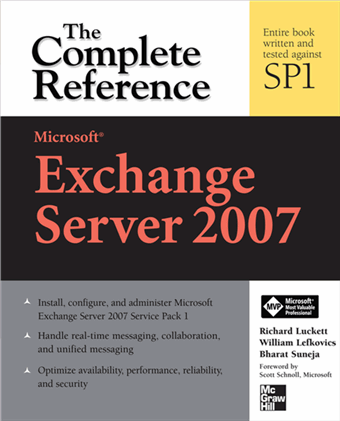With the release of Exchange System Manager (ESM) for Windows Vista yesterday (Released: Exchange System Manager for Windows Vista), there's been concern about the fact that ESM is not supported on the same computer as Microsoft Outlook. However, the coexistence of the two has not been a supported scenario for long.
From KB 266418: Microsoft does not support installing Exchange Server components and Outlook on the same computer:
Comments on the Exchange team blog post yesterday indicate many folks (myself included in the past) have been doing exactly that... installing ESM and Microsoft Outlook on the same computer. It's not the same thing as installing Outlook on the Exchange Server, something I haven't attempted in a long time, and wouldn't encourage you to do.
William Lefkovics (Exchange MVP and fellow coauthor of Exchange Server 2007: The Complete Reference) has a great overview about this on Slipstick: A Mixed History of Remotely Managing Exchange Servers
From KB 266418: Microsoft does not support installing Exchange Server components and Outlook on the same computer:
Microsoft does not support installing Microsoft Outlook and Microsoft Exchange Server 2003 (including Exchange System Manager), Microsoft Exchange 2000 Server (including Exchange System Manager), or Microsoft Exchange Server 5.5 on the same computer. The Product Support group does not support the coexistence of Outlook and Exchange on the same computer in a production environment.The KBA provides an explanation of the issue related to MAPI32.DLL, and also indicates that these can be installed on the same computer for demonstration purposes. They're not supported in production.
Comments on the Exchange team blog post yesterday indicate many folks (myself included in the past) have been doing exactly that... installing ESM and Microsoft Outlook on the same computer. It's not the same thing as installing Outlook on the Exchange Server, something I haven't attempted in a long time, and wouldn't encourage you to do.
William Lefkovics (Exchange MVP and fellow coauthor of Exchange Server 2007: The Complete Reference) has a great overview about this on Slipstick: A Mixed History of Remotely Managing Exchange Servers
Labels: Administration

 Exchangepedia Blog is read by visitors from all 50 US States and 150 countries world-wide
Exchangepedia Blog is read by visitors from all 50 US States and 150 countries world-wide



2 Comments:
It is possible to get Outlook and ESM on the same machine under Vista
If you extract the CDO dlls from the MSI file and put them in a folder.
Using ORCA I was able to find out how the ESM msi was detecting where the CDO dlls were installed.
I then created the reg key and pointed it to the folder I created
I re-ran the install. So far I have not run into any issues, but I never ran into them under XP either
So use at your own risk
Thanks for this post. Nice blog.
Post a Comment
Links to this post:
Create a Link
<< Home